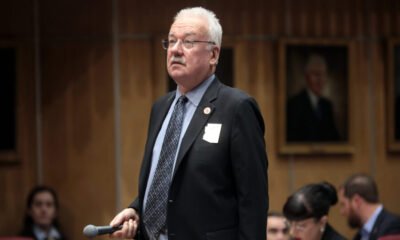arizona
Who’s Next on Death Row? AG’s Crucial Decision Looms

In Arizona, 23 death row inmates have exhausted their appeals, positioning them as potential candidates for the state’s next execution.
Attorney General Kris Mayes recently oversaw her first execution, signaling the resumption of capital punishment in the state. As attention now shifts to who might be next, the decision-making process has evolved.
Traditionally, executions followed a predictable pattern: once federal habeas corpus proceedings concluded or appeals were waived, a warrant was typically issued. However, prior pauses in the death penalty have contributed to a backlog, leaving discretion largely in the hands of Mayes and her predecessors.
According to the Attorney General’s Office, the 23 inmates represent a significant moment in the legal landscape. Despite Maricopa County Attorney Rachel Mitchell suggesting a potential candidate, the attorney general’s office has remained tight-lipped regarding its criteria for selecting the next execution.
Dale Baich, a former public defender, noted that the standard procedure has historically involved the Arizona Supreme Court setting execution dates once all legal avenues were exhausted. The hiatus in executions, particularly from 2000 to 2010, has played a critical role in the current backlog faced by the state.
Only one execution occurred during that decade, when Robert Comer waived his appeals in favor of execution. From 2011 to 2014, Arizona executed 13 individuals after resolving legal challenges related to execution methods.
Kent Cattani, who served as chief counsel in the capital litigation section from 2002 to 2013, emphasized that his tenure involved no backlog. Executions proceeded based on the chronological resolution of appeals.
The situation shifted after the botched execution of Joe Wood in 2014, prompting another pause in seeking execution warrants. By the time executions resumed in 2022, the backlog had escalated, with approximately 20 inmates awaiting resolution.
An analysis by the Arizona Capital Representation Project revealed that executions before 2000 typically occurred within a year of appeal resolutions, a trend that diminished under Attorney General Mark Brnovich. His administration oversaw three executions in 2022 that deviated from the expected order based on appeal resolutions.
In contrast to previous practices, Brnovich initiated executions based on his scheduling rather than strictly adhering to the chronological order of appeals. One notable case involved Aaron Gunches, whose execution ultimately fell to Mayes’ administration.
As Mayes navigates the next steps, she faces considerable pressure. Mitchell nominated Richard Djerf for execution, citing the 1993 murder of four family members. Djerf exhausted his appeals in 2020, adding urgency to the decision.
Mitchell emphasized her commitment to delivering justice for victims’ families, asserting the importance of timely closures for those affected by such violent crimes. Colleen Clase from Arizona Voice for Crime Victims echoed this sentiment, noting the complexities in prioritizing which cases to address first.
The prolonged legal processes can significantly impact victims’ families, challenging the state’s commitment to ensuring a prompt conclusion as stipulated in the Victims’ Bill of Rights. “When cases stretch on for decades, it undermines victims’ rights,” Clase remarked.


















